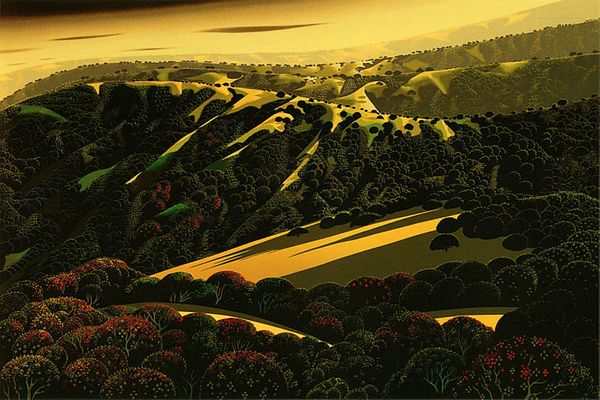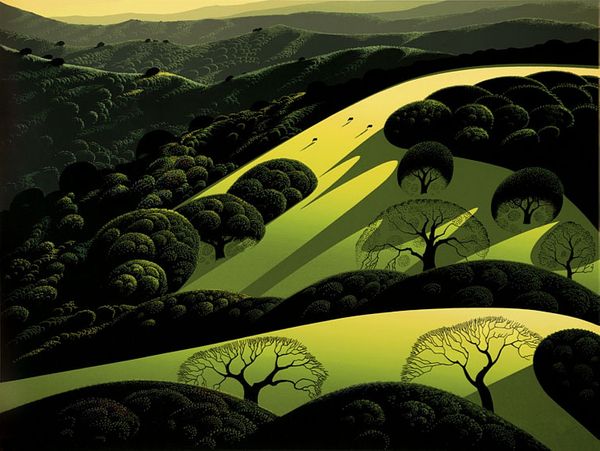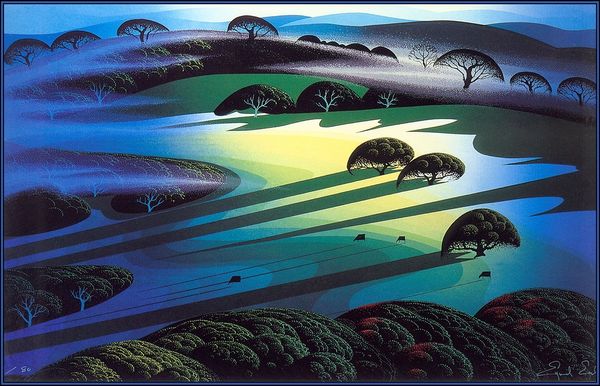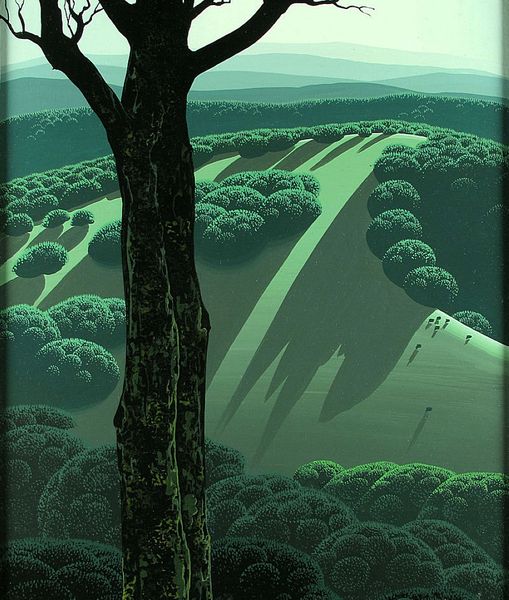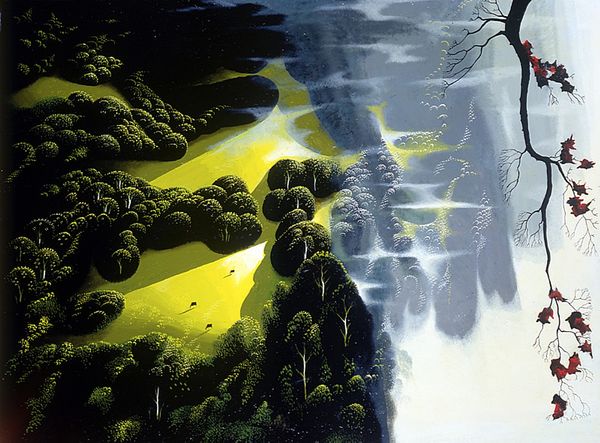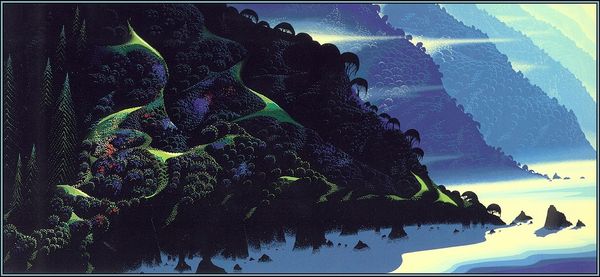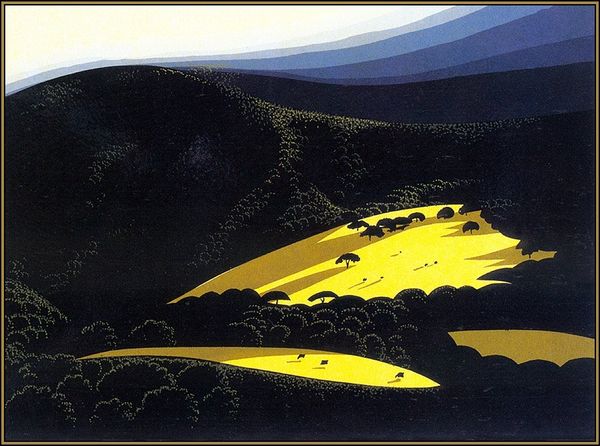
acrylic-paint
#
fantasy art
#
landscape
#
acrylic-paint
#
naive art
#
natural-landscape
#
surrealism
#
surrealism
#
modernism
Copyright: Eyvind Earle,Fair Use
Curator: Oh, there’s such a feeling of hushed reverence in this one… it makes me want to tiptoe through the gallery! Editor: It's Eyvind Earle's "Fog and Storm and Rain," painted in 1996. Acrylic on, I presume, prepared board given the hard edges. Quite a statement in the mid-90s when so many were turning to digital techniques. Curator: You know, those clean lines and that almost airbrushed look lend it a sense of dreamscape…like a half-remembered childhood place where all the trees are perfect broccoli florets! There’s something sweetly unsettling about it. Editor: The materiality is fascinating; look at how each tree is regimented, produced as modules that build into a larger ecosystem. Very labor-intensive to achieve this degree of precision and suggests industrial models applied to a natural subject. Curator: Absolutely. But also… aren’t landscapes always *ideals*? We never quite find them as pristine as we hope, so this resonates with that yearning for impossible perfection. I am also completely transported by that swatch of sudden sunshine slicing through… Editor: The yellow, yes—an artificial light source amidst a supposedly natural vista. What resources and processes went into creating such an intensely pigmented surface? Consider also how the application of light affects perceived value, framing the central field like a stage. Curator: And does anything actually happen on that stage? We expect some grand event to play out under that spotlight, but maybe that's part of Earle's humor... Or perhaps the loneliness of the open green spot echoes the potential inherent in landscapes—promising adventures, but often falling short. Editor: So the experience becomes about unrealized expectations? I am mostly just struck by the environmental impact involved, not only with painting this, but with seeing the manufactured landscape as resource exploitation, given his heavy dependence on certain mined and refined material outputs to even do something like this, like titanium for that striking white. Curator: Yes, that is there, but ultimately, despite all the critical dissection, isn’t there also simply something peaceful about it? The perfect calm before the…well, before the fog and storm and rain arrive! I think I love his idealized, yet strangely accessible view of the landscape and nature's forms... Editor: I see it a bit differently—a statement about manufacturing desire within landscapes as sites of consumption—rather than passive appreciation, maybe it reveals the dark ecological footprints embedded in our romantic vision of Nature.
Comments
No comments
Be the first to comment and join the conversation on the ultimate creative platform.
